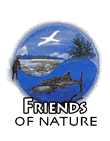FRIENDS OF NATURE BELIZE | PLACENCIA LAGOON
| HOME |
| ENFORCEMENT |
| RESEARCH |
| EDUCATION/ OUTREACH |
| OUR HISTORY |
| JOIN US (coming soon) |
PLACENCIA LAGOON
PICS PICS PICS
| FoN BELIZE: TO MONITOR LAGOON LIFE |
|
GLADDEN SPIT & SILK CAYES LAUGHING BIRD CAYE Placencia Lagoon lies directly behind the narrow Placencia Peninsula. It is an equally narrow, 18-mile (24-km) long estuary that is mainly shallow (3-6-ft - 1-2 meters), with a few deeper holes and channels. Its width and area are somewhat variable because of enormous marshy wetlands that blanket most of the inland coast. The Lagoon is connected to three important rivers: Mango Creek, Jenkis Creek, and Waha Leaf Creek. Seagrass beds occupy more than 50% of the lagoon bottom. The lagoon is home to a remarkable suite of biodiversity including several endangered and magnet species like the Jabiru Stork, Morelet's crocodile, and West Indian manatee. Both bottle-nosed and Atlantic spotted dolphins also frequent the Lagoon. Much of the coast is lined with mangroves whose roots are encrusted with a rich variety of sessile life - shellfish, sponges, anemones, and algae - and provide shelter for juveniles of many commercial species of fish. The savanna ecosystem on the west coast of the lagoon leads into a dry tropical forest that provides a biological corridor to the Cockscomb Jaguar Reserve. However, extensive development is underway on both sides of the Lagoon. The inland coastal savanna has proven ideal for shrimp farming and its unfortunately devastating impacts. On the peninsular side, the booming tourism industry has brought thousands of visitors to enjoy the sandy beaches and look for vacation homes. All this development brings with it the attendant environmental problems, including leaching of sewage through the sandy substrate of the lagoon and extensive clearing of mangroves along the lagoon shore. The combination of tourism and iindustries could overwhelm the ecology of Placencia Lagoon, particularly the rich sea grass beds that flourish in its shallow waters and are prime feeding ground for manatee. Monitoring of some parameters has already begun. Preliminary data show a few disturbing trends: the mouth of one creek near a farm showed low dissolved oxygen. The upper basin has little sea grass, the main forage for manatee, even though reports describe meadows of sea grass ten years ago, this is swiftly declining. Friends of Nature is in ongoing discussions with the Government of Belize to formally protect our lagoon. Properly managed, the Placencia Lagoon could have huge positive impact, increasing the flow of tourism and revenue to the area. Kayaking, birding, mangrove snorkeling, manatee watching are all readily available within the lagoon. The convenience of being able to use the lagoon irrespective of the weather would mean that almost every visitor to the area would find some activity in which they can engage.
|

BELIZE
CENTRAL AMERICA